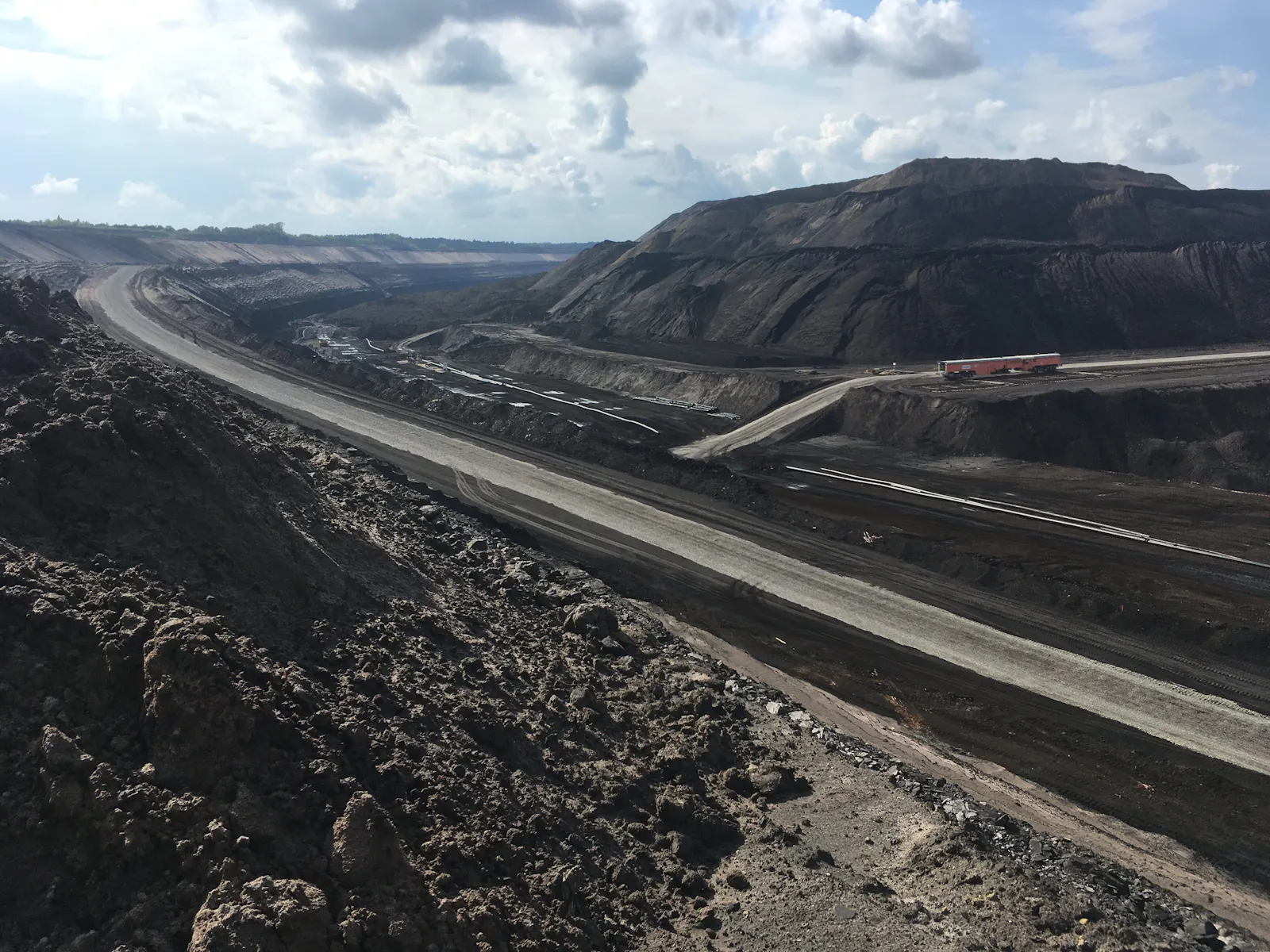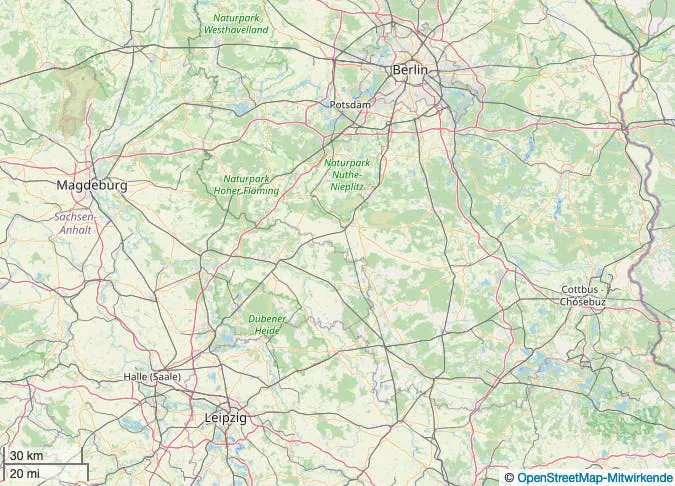Lies we tell ourselves so we can sleep at night, episode 1: the myth of Germany's “coal phaseout”

Good morning everybody,
I recently spent an entire day in what is, to be perfectly honest, one of my least favourite places in this entire country, the Eastern German coal mining region of Lusatia. “Why”, you might ask, did I do so, what with Lusatia, with its Nazi-infestation-problem, its general reactionary and at the same time abandoned vibe, not exactly being a top recreational spot for a gay communist with a climate justice-background? I was there, because I had the privilege (not meant as a commonplace: it really was a privilege) to be on the road with a group of young climate journalists from southern Africa, as a political tour guide, so to speak. The group was organized and I was invited by the wonderful comrades from Journafrica (Opens in a new window), who, among other things, started out with the highly commendable project of challenging the image of the African continent (or simply: "Africa", as if it were a country) in Germany, which is still almost exclusively characterized by colonialist bullshit. Apologies for the brief commercial interruption, the topic of this text is a different one, but Journafrica are just so awesome that I had to briefly give them their due.
Now, back to Lusatia, a region that, although geographically close to global Berlin, is about as remote from the centres of political and cultural power in Germany, as you can get. A mere 100 kilometers south-southeast of Berlin lies Cottbus, the capital of Lusatia. This was to the GDR what the Rhineland was to the German Reich, the Nazis and later the FRG (West Germany), what northern England was to the united kingdom: the country's energetic heartland, containing by far the largest reservoir (a smaller one is the coal region around Leipzig) of the country's only indigenous energy source existing in significant quantities - in Lusatia lie, or lay, gigantic quantities of lignite, the dirtiest of all fossil fuels, but back then, of course, this was not an issue. What was important was that Lusatia was the region that supplied power and heat to the GDR, without which factories would have stood still, grandmothers would have frozen to death in their unrenovated apartments with coal heating, without which the lights would have gone out. In the memorably brutal winter of 1978/9, coal miners (side note: unlike hard coal, which is mined in underground deep pits, and of which we know the famous pictures of soot-blackened coal miners, lignite is mined in large, open pits, in these gigantic holes, these wounds in nature, some of which have the spatial dimensions of a major German city and the depth of German self-deception - actually, wait, that's not true: an open pit mine does not have unlimited depth)... But back to the point: heroic (no irony) miners worked 16-hour shifts during this crazy winter, together with special units of the NVA, the East-German army, and in essence prevented the collapse of the energy and heating system of a whole country. You can imagine how proud the colleagues are of this. And not only the colleagues in the narrower sense: coal forms (as is the case in every large industrial monoculture, for reasons we won't have the time to go into) the central and by and large unquestioned and unquestionable basis for regional identity constructions, even if today only a fraction of the jobs remaining in the region are still linked to coal. As the local saying goes, "I'm a miner, who is more?"

By the end of the 1980s, however, i.e. until just before the brutal (& in essence colonial) deindustrialisation process forced onto Eastern Germany during what is too kindly referred to as the “reunification of Germany”, around 100000 people were working in the coal sector, with the usual backwards- and forwards-linkages that arise to support heavy industries, which in turn create many more jobs in adjacent fields. This deindustrialisation caused the admittedly extremely inefficient East German lignite sector to shed some 90% of its jobs. From one hundred to ten thousand in less than ten years. The word "trauma" only describes this process inadequately: during these years, Lusatia as it had existed until then quite simply died.
25 years later, another actor identified by the local population as foreign, as a “Western imperialist”, as it were, would set out (at least so the perception of many in Lusatia) to rob the region of the last bit of industrial structure, financial independence and identity: the climate movement, above all the disobedient anti-coal comrades from Ende Gelände (full disclosure: I was involved in setting up that campaign, and was one of its spokespeople in 2016), whose second action (after 2015 in the Rhineland) took place in Lusatia in 2016. I have told the story of this action elsewhere (Opens in a new window), but the short summary is: the local population by and large hated us, and finally attacked us in the form of a mob consisting of Nazis, locals and mining-union flag-waving workers.
This constituted something of a political watershed moment for us climate leftists, and for me personally as an eco-communist. It was an incredibly incisive and indeed traumatic moment, in a certain sense my own "frankfurt school" moment, where I lost the last shred of trust in industrial workers and their organizations as potentially allies in the climate justice struggle. I understood then what many leftists and climate activists still have not understood, or do not want to understand: Germany will be our enemy, from top to bottom, from left to right - from the Rhineland to Lusatia.
This region, to finally segue back to our friends from Journafrique and the very interested, and in their own right very interesting African journalists, was the perfect place to check out one of Germany's most successful new policy exports: the Coal Commission (full name: The Commission for Growth, Structural Transformatino and Employment), and the so-called “coal compromise” it negotiated. Because, you see, on the international stage, Germany has long been using the country's image as a "climate champion (Opens in a new window)" as an important pillar of its soft power, and as an internal legitimation device, because this image effectively obscures, even for us "Germans" who should know better (we see the cars and all the dirt every day), the reality that Germany is actually the EU' US, a country whose wealth is based on the production of dirty, fraudulent cars (aka SUVs). The anti-coal movement – 2017 Ende Gelände through an action timed with the COP23 climate summit in Bonn, 2018 the Hambis with their heroic and extremely well-messaged defense of the Hambach Forest, had launched a direct and effective attack on this image, knowing that this image also made political communication difficult for us in this country, as it significantly reduced the "issue salience" (the importance of an issue) of lignite in the public eye. In 2018, I thought, I think many thought: Goal achieved, image destroyed, Germany exposed as brown instead of green.
But, and do write this down, dear comrades (yes, all caps): NEVER UNDERESTIMATE YOUR ENEMY!
Not only had the anti-coal movement underestimated the strategic effectiveness of Team Coal (Opens in a new window) under the leadership of the coal union IGBCE, we had thought (hoped? lied to ourselves?) that the government's response to our 10-year struggle would be a coal phase-out, with the nuclear phase-out as a model. But the coal industry was a very different opponent than nuclear power, the nuclear phase-out was performatively totally out of line with Merkel's style of governance, and the basic structure of federal German politics has always been a corporatist one: if there's a difficult problem that can't be easily solved, what is to be done? Push the issue into a tripartite commission, & see what they can work out. Since there was no easy solution to the debate about the future of lignite, symbolized in the struggle over the phase-out date, the “grand coalition” re-elected (or rather: not voted out) in 2017 appointed the above-mentioned commission. The formal goal of the commission was to develop an exit path from lignite that should be "socially acceptable" (i.e.: not turn the coal regions even further into economic wastelands), to provide coal workers not only with a decent economic livelihood, but good, if possible equivalent new jobs, "work with dignity", implicitly also to keep our protofascist party AfD down (a worthy goal of course) ... And, oh yes, exactly, there was also something about protecting the climate, and a vague notion that the “Paris Targets” needed to be met.

[Onke Ngcuka Yajap]
That is to say that the implicit political goal of the Coal Commission, of West German corporatism in general, was the pacification of a complex political conflict by having the state place competing actors at the same table, at which the state in turn mediates a compromise which pacifies the conflict. Interestingly, the literature on German corporatism that I had to read as a PoliSci undergraduate never explained how these magic compromises were made possible (it was a little bit politics-as-sausage (Opens in a new window), the commission itself remained a black box): any politico-economic compromise in the North is based on Northern countries' ability to externalize economic costs onto other countries, especially in the global South. After all, this “South” does not sit at the table in the Commission. No, the interests of the rest of the world, of the poor, whom the climate crisis affects first and foremost, the interests "of the climate" were until now "represented" in the public debate, among others, by the various voices of the climate and other international justice movements, certainly more badly than well-represented, but still. It is no coincidence that the left wing of the movement called itself the Climate JUSTICE Movement, not merely the Climate PROTECTION Movement.
So the climate and global justice sat at the table, "on an equal footing" with the coal regions, the coal workers and the coal companies (what? Team Coal with 3 votes? Amazing!), represented on the one hand by "the science" (not even an actor - rather a fundamentally habitual system-stabilizing profession, sworn to what turns out to mostly be a “false balance” and neutrality), on the other hand by a a few “Big Greens”, which, by joining the commission, split the anti-coal and climate movement, which had been closely welded together by the common struggle for the Hambacher Forest.
This commission is now being hailed as a successful model for pacifying the large-scale socio-ecological conflicts that are emerging with increasing frequency around the world. Southern Africa, South Africa in particular, is facing a whole series of such conflicts. Hence the journey to Lusatia.
But for now, an intermission. This text should have taken a somewhat somewhat different route, but - and I mean this literally - the coal commission represents a personal trauma for me, marking the victory of fossil capitalism, of Team Coal over a movement that had been my life for a whole decade, that came before any relationship, before any party, until 2016 even before my identity and truth as a hedocommunist party-faggot.
Next time on friedlicheSabotage.net:
Was the climate saved? Are the coal regions now flourishing green industrial landscapes? Did our African friends thank us on their knees for the brilliant solution to their coal problem?
Stay tuned. Until then: have fun, and never forget, the normality in which we live in the global north is a moral abomination which should not exist as it does.
Yours truly,
Tadzio


